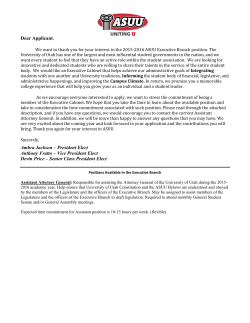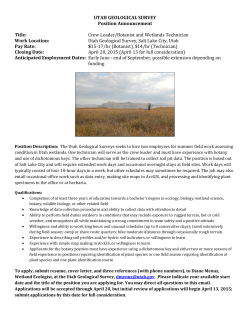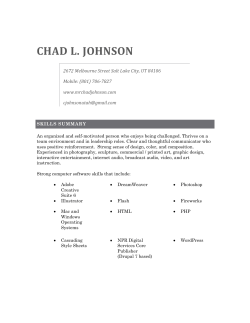
Document 173519
January 2009 HG/Native Plants/2009-05 Prince’s Plume in the Landscape Heidi Kratsch, Extension Ornamental Horticulture Specialist Graham Hunter, Research Associate, Center for Water Efficient Landscaping Stanleya pinnata Prince's Plume Description: Extremely drought-tolerant perennial to 5 feet, tall with a large mound of coarse foliage at the base and tall plumes of lemon yellow flowers in summer. This species occurs naturally throughout the interior West and plains states. Though small, the flowers are numerous and open progressively towards the tip of the stalk; the effect in the landscape is quite spectacular. Photo credit: Graham Hunter Cultural Requirements: • Native habitat • Soil • • • Cold Tolerance Drought Tolerance Salt Tolerance Sun/Shade Preference Propagation Maintenance • Problems • • • Valleys and foothills; talus slopes at elevations from 3,000 to 9,000 feet Thrives in poor, dry, sandy soil; use gravel mulch Zones 4 - 8 High Moderate Full sun From seed and division Requires good drainage, and low fertility soils; water sparingly once established Toxic to livestock Landscape Value: • Use in the Landscape • Leaves • Flowers Apr • • • Color Fruit (seedheads) Form • • • • Texture Ultimate Size Rate of Growth Plant Community • • Availability Cultivars Background, accent, rock gardens; try several plants progressing through strategically placed boulders in a xeric garden! Blue-gray, lanceolate (lanceshaped) leaves at base; finer and thinner up the stalks Showy, lemon yellow arranged in a raceme (flowers attached to a central stalk by a short stem) May June July Aug Sept Oct Silique (2-chambered capsule) Erect flower stalks emerge from clumps of mostly basal leaves Fine, feathery 1-5 feet tall Medium to fast Mountain brush, pinyon-juniper, shrub steppe, cool desert shrub, salt desert shrub Limited, but improving none of ornamental value Propagation Cold-stratify seed for up to 90 days. Sow seed to a depth of ¼″ in a well drained, peat-based soil-less substrate. Transplant seedlings to individual pots as soon as roots are established and growing. Additional Photos Photo credits: Heidi Kratsch References Digital Atlas of the Vascular Plants of Utah. 2008. URL: http://www.nr.usu.edu/GeographyDepartment/utgeog/utvatlas/family/brass/stpi.html Mee, W., J. Barnes, R. Kjelgren, R. Sutton, T. Cerny, and C. Johnson. 2003. Waterwise: Native Plants for Intermountain Landscapes. Utah State University Press, Logan, UT. USDA-Natural Resources Conservation Service. 2008. Plants database. URL: http://plants.usda.gov This fact sheet belongs to a series of fact sheets about Intermountain West native trees, shrubs, perennials, and grasses called “Native Plants in the Landscape.” Look for others in the series by visiting http://extension.usu.edu/htm/publications, then clicking on ‘Horticulture’ and ‘Native Plants’. Utah State University is committed to providing an environment free from harassment and other forms of illegal discrimination based on race, color, religion, sex, national origin, age (40 and older), disability, and veteran’s status. USU’s policy also prohibits discrimination on the basis of sexual orientation in employment and academic related practices and decisions. Utah State University employees and students cannot, because of race, color, religion, sex, national origin, age, disability, or veteran’s status, refuse to hire; discharge; promote; demote; terminate; discriminate in compensation; or discriminate regarding terms, privileges, or conditions of employment, against any person otherwise qualified. Employees and students also cannot discriminate in the classroom, residence halls, or in on/off campus, USU-sponsored events and activities. This publication is issued in furtherance of Cooperative Extension work, acts of May 8 and June 30, 1914, in cooperation with the U.S. Department of Agriculture, Noelle E. Cockett, Vice President for Extension and Agriculture, Utah State University.
© Copyright 2025





















